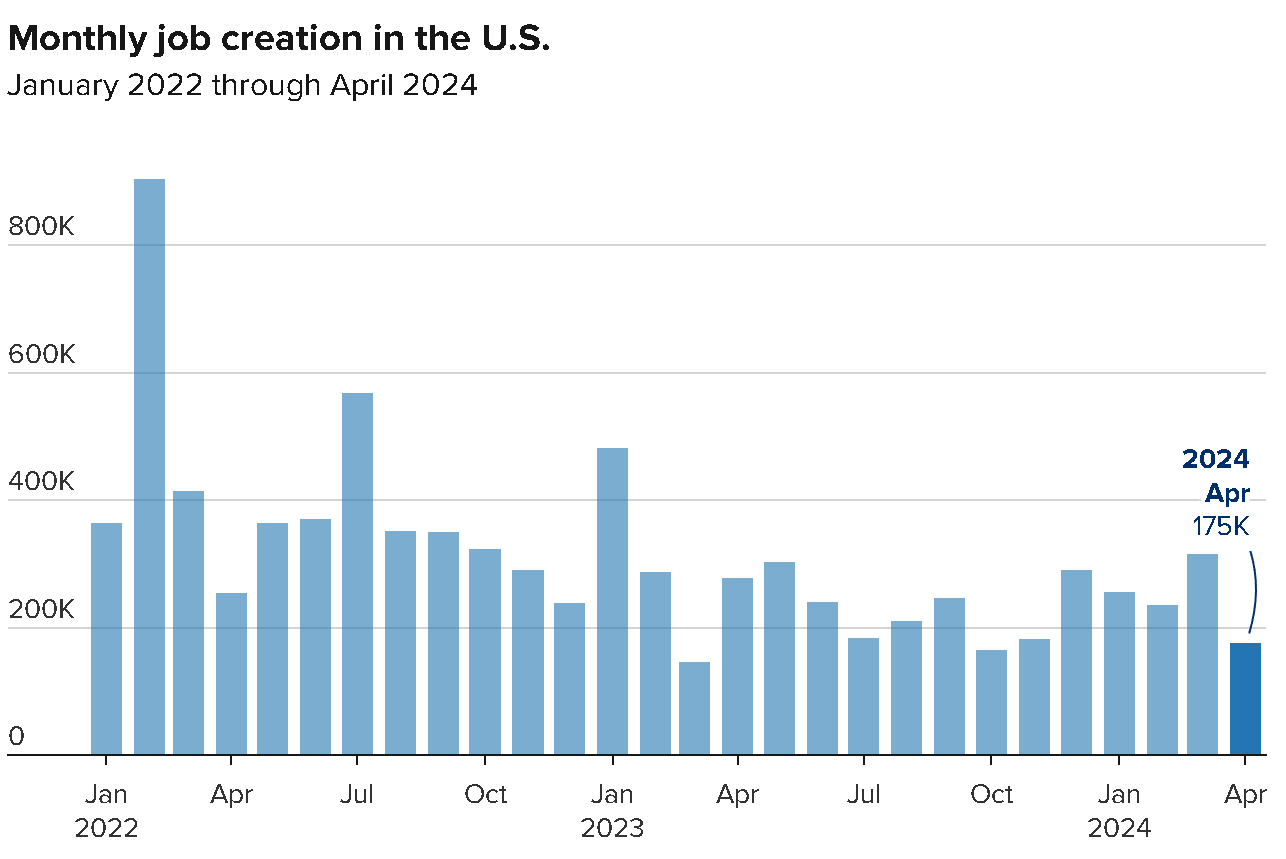Apartment List released its monthly rent report last week, showing that rent prices rose for the third consecutive month, but the growth was modest. This indicates sluggishness in the market. The national median rent increased by 0.5% in April to $1,396. However, rent growth slowed slightly compared to the previous month. This could be a sign of another slow summer season in the market.
Source: Apartment List (May 2024)
“Since the second half of 2022, seasonal declines have been steeper than usual and seasonal increases have been more mild. As a result, apartments are on average slightly cheaper today than they were one year ago. Year-over-year rent growth nationally currently stands at -0.8 percent and has now been in negative territory since last summer. But despite this cooldown, the national median rent is still more than $200 per month higher than it was just a few years ago.”
Further, Apartment List notes that rent growth typically rises during this time of year, but it stalled out this month. Last year showed a similar trend, with growth flattening out after a brief period of positive rent growth. While last month’s data suggested a bounceback, this month’s estimate suggests the sluggishness in the rental market may persist.
Jiayi Xu and Danielle Hale of Realtor.com report on similar data, highlighting that in March 2024, the US median rent for 0-2 bedroom properties in the top 50 metros decreased by 0.3% YoY but increased by $14 from last month to $1,722. This was the eighth month of consecutive YoY declines. The US median rent was $36 less than the peak in August 2022 but still $313 higher than at the same time in 2019.

Source: Realtor.com (May 2024)
“Rising shelter costs have been a major driver of the overall rate of inflation. Stabilizing market rents could make it difficult to see further improvement in the overall rate of inflation, complicating the Fed’s policy decision and underscoring the need for additional housing construction to alleviate the supply shortage that is contributing to higher costs.”
A second report from Keith Griffith at Realtor.com highlights the cities where rent rises the most, noting that they were all in the Northeast and Midwest, “underscoring how regional supply and demand can drive the biggest bumps.”
- Chicago, IL ($1,846, + 4.3%)
- New York City, NY ($2,876, +3.8%)
- Kansas City, MO ($1,340, +3.4%)
- Boston, MA ($3,023, +3.3%)
- Indianapolis, IN ($1,297, +3.3%)
Labor market
Jeff Cox of CNBC reports on the recent labor market release. In April, the U.S. economy added 175,000 jobs, falling short of the estimated 240,000. The unemployment rate rose to 3.9% instead of holding steady at 3.8%, leading to speculation that the Federal Reserve may cut interest rates in the near future.

Source: CNBC (May 2024)
According to Cox, following the release, “market action shifted after the jobs report indicated an easing labor market and softer wage increases. Traders priced in a strong chance of two interest rate cuts by the end of 2024, with the first reduction expected to come in September.”
Logan Mohtashami of HousingWire (subscription required) breaks down the report and its implications for the real estate sector.
“We now have multiple data lines that show the labor market isn’t as tight as it once was. The Federal Reserve is now considering this since they have been talking more about their dual mandate as opposed to just being a single mandate Fed. This is positive for mortgage rates because once they pivot, we can see a more sustained move lower in rates instead of what we have had to deal with since 2022. We still have some work to get wage growth back down to a 3%-3.5% level, but it’s at least heading that way.”
Courtenay Brown and Neil Irwin of Axios report on the data, highlighting that the job market is returning to a more steady state. The data shows ample jobs, diminishing wage pressures, and less of a turbocharged market that we’ve seen as inflation steadily rose.
Finally, Mortgage Bankers Association (MBA) Deputy Chief Economist Joel Kan reacts to the report on employment conditions in April and its implications for the mortgage sector.
“April’s jobs report showed a little less strength than expected…This slowdown in wage growth indicates there has been some cooling in hiring and will help ease some of the upward pressure on service sector inflation, which has been one of the drivers keeping overall inflation elevated…The Fed indicated earlier this week that they are in no hurry to cut rates given the persistence of higher inflation. However, today’s report might give them some leeway to do so if the job market continues to weaken and if inflation trends start to follow. As indicated in our FOMC commentary earlier this week, we expect mortgage rates to decline later this year, but not as quickly as we initially expected.”
#LocalNews
Sarah Marx of HousingWire reports on the tri-state area and how the housing shortage could cost the region economically. Specifically, a new report from the Regional Plan Association shows that areas of New York, New Jersey, and Connecticut may face a shortage of 920,000 housing units by 2035. There is currently a shortage of 540,000 units; the construction pace will need to increase significantly to address the crisis. The region will need to build homes at the rate it did after World War II to close the gap between supply and demand fully.
Brooklee Han, also of HousingWire, reports that the North Carolina market is facing housing pressures. Low inventory is causing difficulties in North Carolina’s housing market as homeowners are reluctant to sell due to low interest rates. Further, few new construction options are available, making it hard for buyers to find properties. Real estate professionals are frustrated by the need for more inventory. In Charlotte, for example, inventory has stayed the same for at least eight years, making it a sellers’ market.
Lidia Dinkova of The Real Deal reports on South Florida, highlighting that developers of multifamily buildings in South Florida are slowing their projects or stopping them altogether due to various factors, including skyrocketing insurance premiums, high construction costs, and record numbers of units on tap. Apartment construction starts have dropped significantly in Miami-Dade, Broward County, and Palm Beach County during the past two quarters compared to a year ago.
Home prices have also stagnated in Florida and Texas, according to a new report from Lily Katz at Redfin. “Florida and Texas have been building more homes than anywhere else in the country, partly to accommodate the flood of newcomers that showed up during the pandemic homebuying boom. But the boom is over, in part because many people have been priced out. Now, homes are sitting on the market and price growth is stagnating.”
Anushna Prakash of Zillow also reports on its own data showing that the number of “million-dollar” cities (cities where the average homes are worth $1M+) in the U.S. has hit a record high of 550, 59 more than last year. California has 210 million-dollar cities, more than the next five states combined. New Jersey gained the most million-dollar cities over the past year, while Florida, Texas, and Delaware saw a net loss in such cities.

Source: Zillow (May 2024)
The post Rent growth has been sluggish throughout 2024 appeared first on Stessa.
 DaleDaemicke.com Your Trusted Resource for Real Estate Insights
DaleDaemicke.com Your Trusted Resource for Real Estate Insights
